Emergency Response Timeline - Printable Version
This timeline contains a brief history of key incidents and legislative milestones in the Environmental Protection Agency's Emergency Response Program.
EPA’s emergency response program responds to oil spills, chemical, biological, radiological, and nuclear incidents and large-scale national emergencies, including homeland security incidents. EPA provides support when requested or when state and local first responder capabilities have been exceeded. Through coordinating and implementing a wide range of activities, EPA conducts removal actions to protect human health and the environment.
Torrey Canyon Tanker Spill
March 18, 1967
- A 970-foot oil tanker—the Torrey Canyon—runs ashore near Land’s End, England and spilled 33 million gallons of crude oil that impacted over 150 miles of coastline in England and France. Because of the effects from this incident, the U.S. sent several representatives to Europe to learn about the response activities. This resulted in the development of the National Contingency Plan.
National Contingency Plan
1968
-

Santa Barbara Oil Slick
1969
-
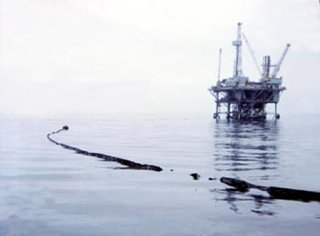
Cuyahoga River Fire
June 22, 1969
-
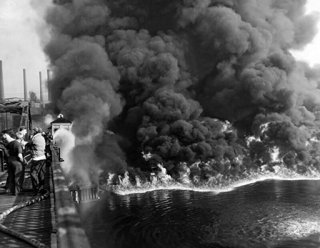
Clean Water Act
1972
-

Love Canal
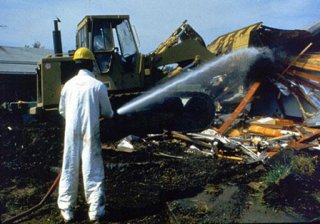
1978
- In the late 1970s, the EPA and the New York State Department of Environmental Conservation (NYSDEC) began investigating groundwater, indoor air, and sump water near Love Canal—a former landfill that was covered with soil and leased to the Niagara Falls Board of Education (NFBE). This was a result of residents in the area complaining about odors and residue from toxic chemicals that caused contamination. This incident led to Congress passing the Comprehensive Environmental Response, Compensation, and Liability Act (CERCLA)—more commonly known as Superfund—on December 11, 1980.
Valley of the Drums
1979
- The A.L. Taylor site in Brooks, Kentucky—more commonly known as the Valley of the Drums—was originally used for waste disposal and drum recycling from the late 1960s to late 1970s. The EPA placed the site on the National Priorities List (NPL) in 1983 The site was contaminated with various contaminants such as volatile organic compounds (VOCs) and Polychlorinated Biphenyls (PCBs) which negatively impacted the area’s groundwater, soil, and surface water. The EPA, along with the Kentucky Department for Environmental Protection (KDEP) and the site’s potentially responsible parties (PRPs) worked together to remediate the site. This incident was one that led to the creation of the Superfund program.
Comprehensive, Environmental Response, Compensation, and Liability Act
1980
-
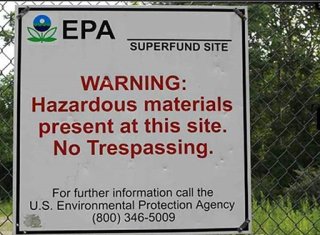
Bhopal Union Carbide Disaster
December 2, 1984
-

Emergency Planning and Community Right-to-Know Act
1986
-
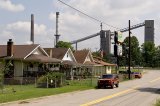
Exxon Valdez Oil Spill
March 24, 1989
-

Risk Management Plan Program

1990
- The Risk Management Plan (RMP) Rule is established to require facilities using extremely hazardous substances to develop a Risk Management Plan.
Oil Pollution Act
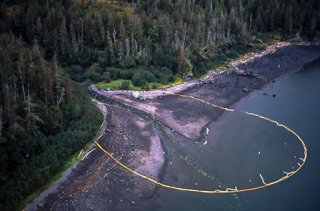
1990
- The Oil Pollution Act (OPA) was signed into law in August 1990. The OPA improved the nation's ability to prevent and respond to oil spills by establishing provisions that expand the federal government's authority, and provide the money and resources necessary to respond to oil spills.
The World Trade Center Attacks

September 11, 2001
- Immediately following the attack on and collapse of the World Trade Center (WTC) in 2001, EPA joined the response and cleanup efforts. EPA helped handle hazardous waste from the site; vacuumed debris and dust from NYC streets; and monitored the air, water, and dust for hazards. In the years that followed the 9/11 terrorist attacks, EPA implemented an extensive free cleaning and testing program for the interiors of residences below 14th street that had accumulated WTC dust. EPA also oversaw the methodical deconstruction of several contaminated buildings near 'ground zero.'
Capitol Hill Anthrax Events
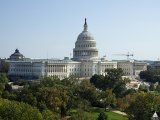
September 18, 2001
- In 2001, anthrax attacks in Washington, DC created widespread fear and uncertainty. EPA-led cleanup efforts tested both surfaces and air in contaminated buildings for the presence of anthrax and ultimately decontaminated the facilities so that they could be reopened.
Columbia Space Shuttle Accident
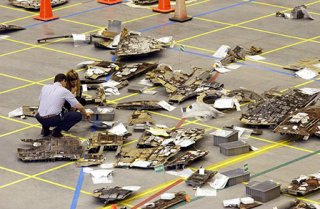
February 2003
- On February 1, 2003, the Columbia Space Shuttle fractured upon reentry into the atmosphere. In the aftermath, EPA removed shuttle debris and responded to the release of hazardous materials—helping to find over 47,000 pieces and recovering 125 hazardous materials containers from the shuttle. EPA's team averaged 650 field personnel at the highest point in the disaster and a total of 1,900 personnel involved in the incident.
Hurricanes Katrina and Rita
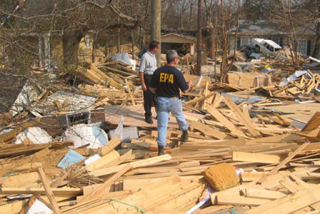
August 23, 2005
- In 2005, Hurricanes Katrina and Rita became the first significant multi-regional response under FEMA's National Response Plan. EPA responded to 158 hazardous materials emergencies, conducted 36,000 air, water, and sediment samples, cleaned up of over 130 school labs, and collected and properly disposed of over 23,000,000 pounds of hazardous waste.
Deepwater Horizon Oil Spill

April 20, 2010
- Over an 87-day period in 2010, more than 4 million barrels of oil leaked from a well damaged in the Deepwater Horizon Spill. EPA supported the Coast Guard (USCG) by monitoring air, water, and sediment; cleaning the reclaimed oil and waste from the water; and examining the effects of oil dispersants in the subsurface environment.
Kalamazoo River Oil Spill
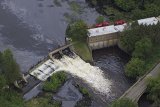
July 25, 2010
- In 2010, EPA led a team of 25 agencies responding to the Midwest's largest oil spill in navigable waters. EPA and its partners collected more than 766,000 gallons of discharged oil from surface waters and 435,000 gallons of oil from other sources.
Japanese Nuclear Incident
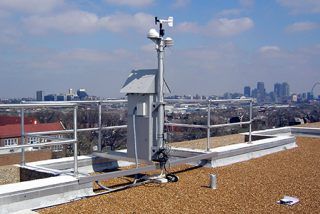
March 11, 2011
- An earthquake and tsunami prompted cascading failures at a nuclear facility in Fukushima, Japan. EPA accelerated and increased sampling frequency and analysis across the United States to confirm that there were no harmful levels of radiation reaching America. The agency also kept the public informed about any level of radiation that was detected.
Joplin Tornado Response
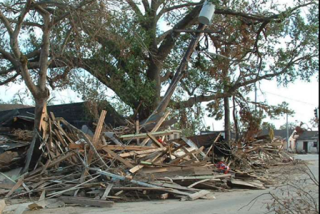
May 22, 2011
- On May 22, 2011, a Category 5 tornado struck Joplin, Missouri, killing more than 150 people and destroying more than 8,000 structures. EPA conducted rapid needs assessments of damaged and destroyed facilities; removed household hazardous waste, white goods and electronic recycling; and monitored air for asbestos.
Silvertip Pipeline Spill
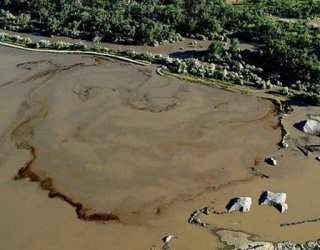
July 2011
- Around the beginning of July 2011, a pipeline breached near or under the Yellowstone River leaking approximately 31,500 to 42,000 gallons of crude oil into the river. The oil dispersed for miles along the banks and overland because of flood staging in certain areas.
Hurricane Isaac
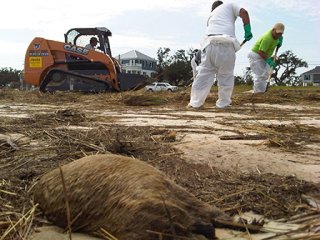
August 28, 2012
- On August 28, 2012, Hurricane Isaac made landfall in Louisiana as a Category 1 hurricane at the mouth of the Mississippi River and significantly impacted coastal Mississippi. Impacts included the deposition of tens of thousands of drowned nutria on Mississippi beaches. The presence of the large number of decaying nutria carcasses was declared a public health emergency, and the EPA was tasked by FEMA to spearhead collection and disposal of the deceased animals along Mississippi beaches due to its ability to rapidly organize contracting and implement field operations.
Superstorm Sandy
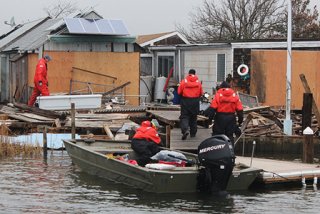
October 22, 2012
- In 2012, Superstorm Sandy devastated many communities and destroyed 200 wastewater treatment plants along the East Coast. Waterways across New York and New Jersey experienced catastrophic effects. EPA responded by cleaning up hazardous waste, preventing sewage from entering local waters, and assessing drinking water facilities.
West, Texas Fertilizer Explosion and Fire
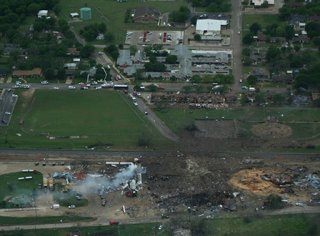
April 17, 2013
- EPA assisted with air monitoring and general response efforts related to an explosion and fire that occurred on April 17, 2013. The fire and explosion resulted in 15 deaths, which included 12 first responders.
The 2013 Colorado Floods

September 11, 2013
- In 2013, heavy rain and catastrophic flooding spread across 200 miles of Colorado, affecting 17 counties. EPA removed debris from critical access routes and rights-of-way for emergency vehicles and public access. EPA disposed of flood debris and reused portions for stream stabilization.
Elk River Spill
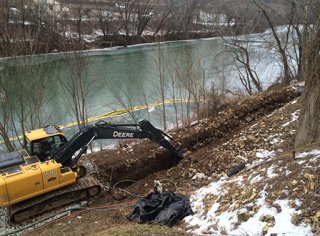
January 9, 2014
- EPA supported the West Virginia Department of Environmental Protection and other partners in response to the release of chemicals into the Elk River (Charleston, WV). The spill contaminated the drinking water of over 300,000 residents. The incident led to an EPCRA amendment which requires community water systems to receive notice of chemical releases as part of America’s Water Infrastructure Act of 2018.
Hurricane Matthew
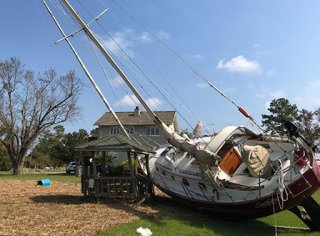
2016
- Hurricane Matthew came ashore October 8, 2016 near McClellanville, S.C. EPA provided material response support in the field in Florida, South Carolina and North Carolina, in addition to technical assistance. Hurricane Matthew appeared to mark an inflection point in the approach southeastern states take in identifying resource and operational requests from the EPA through FEMA. Previously, the approach was for general/wide-area assessment and response support, but with Matthew, Florida and North Carolina shifted to a more focused and targeted approach in their mission assignment requests.
Mosier Oil Train Derailment (Columbia River Spill)
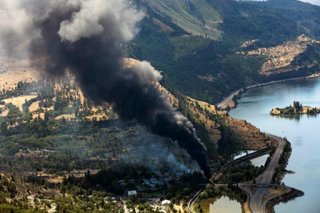
June 3, 2016
- A Union Pacific 96-car train carrying Bakken crude derailed in Mosier, Oregon. Three of the 16 cars that derailed caught fire and four were releasing oil. As a result of the derailment, approximately 13,000 gallons of oil were dispersed into the wastewater treatment plant located nearby. A small amount of oil released from the wastewater treatment plant outfall into the river.
Hurricanes Harvey, Irma and Maria
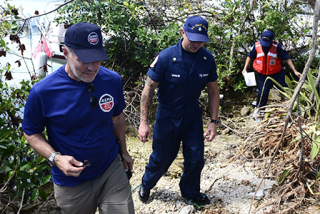
August 17, 2017
- During the 2017 Atlantic hurricane season, EPA led and supported simultaneous response efforts in Texas, Florida, and the Caribbean. More than 1,500 EPA employees and contractors were deployed to field operations, EPA’s Emergency Operations Centers, and other partner agency operations centers.
The 2017 and 2018 California Wildfires
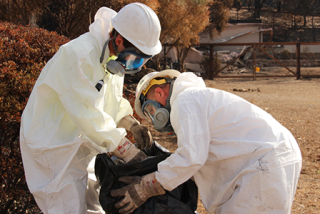
October 2017
- California experienced devastating fires throughout the summers of 2017 and 2018. In response, EPA supported the Federal Emergency Management Agency, U.S. Army Corps of Engineers, and state and local partners by disposing of household hazardous waste and asbestos. This led to proper cleanup of ash and debris and enabled the rebuilding process to begin.
Kilauea Volcano Eruption
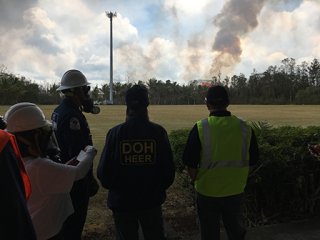
May 17, 2018
- In May 2018, the Kilauea Volcano located on Hawaii’s Big Island erupted, creating hazardous conditions to nearby residents. The volcanic ash and plumes rose between 10,000 and 30,000 above sea level, and the ash was spread by wind over a large part of the surrounding area.
Doon, Iowa Train Derailment
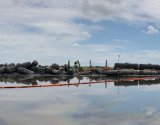
June 22, 2018
- In late June 2018, a BNSF train carrying heavy crude/diluent mix derailed into the Rock River located in Doon, Iowa. EPA provided drinking water monitoring to local partners while responding to this event.
Super Typhoon Yutu, Northern Marianas
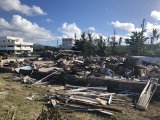
October 2018
- In late October 2018, Super Typhoon Yutu made landfall on the Commonwealth of the Northern Mariana Islands (CNMI) as a Category 5 typhoon. Tinian Island—home to approximately 3,000 people--was directly impacted by the storm.
Midwest Floods
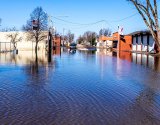
March 2019
- In March 2019, extensive flooding occurred throughout Iowa, Nebraska, Missouri, and Kansas. EPA worked with states to respond to hazardous material releases, oil discharges, and drinking water and wastewater impacts.
Intercontinental Terminal Corporation Fire and Spill
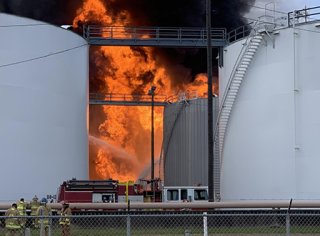
March 17, 2019
- In mid-March 2019, an above-ground storage tank holding naphtha, caught on fire at the Intercontinental Terminals Company (ITC), LLC facility in Deer Park, Texas. EPA assisted with response efforts related to several tank fires and the resultant spill of tens of thousands of barrels (bbls) of material into the Houston Ship Channel. The agency also conducted air monitoring of the surrounding communities during the fire and cleanup.
2020 Western Wildfires

2020
- In 2020, numerous wildfires in California and Oregon burned over 5 million acres. In Oregon, FEMA tasked EPA Region 10 with assessing the vulnerability of 36 public drinking water systems, installing runoff and erosion control along various waterways, conducting household hazardous waste (HHW) collection and removal in eight counties, and providing sustainability advisor support. Similarly, EPA Region 9 supported HHW collection initiatives across affected areas of California. Across both operations, EPA collected and properly disposed of HHW from nearly 5,000 properties.
Winter Storm Uri

February 13, 2021
- During February 2021, Winter Storm Uri brought dangerous cold, freezing rain, and snow throughout much of the state of Texas with life-threatening wind-chill temperatures and hazardous travel conditions from ice and snow. EPA provided drinking water analysis and air monitoring support to the state of Texas. EPA's ASPECT aircraft flew missions over the Houston Ship Channel Industrial area, the Beaumont Industrial Complex, and the Corpus Christi Industrial complex to conduct chemical identification and map chemical plumes in the atmosphere.
Hurricane Ida
August 29, 2021
- In August 2021, Hurricane Ida severely impacted Louisiana, Mississippi, and New Jersey. EPA coordinated with federal, state, tribal, and local partners to provide emergency response support. The agency assessed Superfund sites, oil sites, and chemical facilities; deployed its Airborne Spectral Photometric Environmental Collection Technology (ASPECT) and mobile drinking water labs; and issued fuel waivers.
